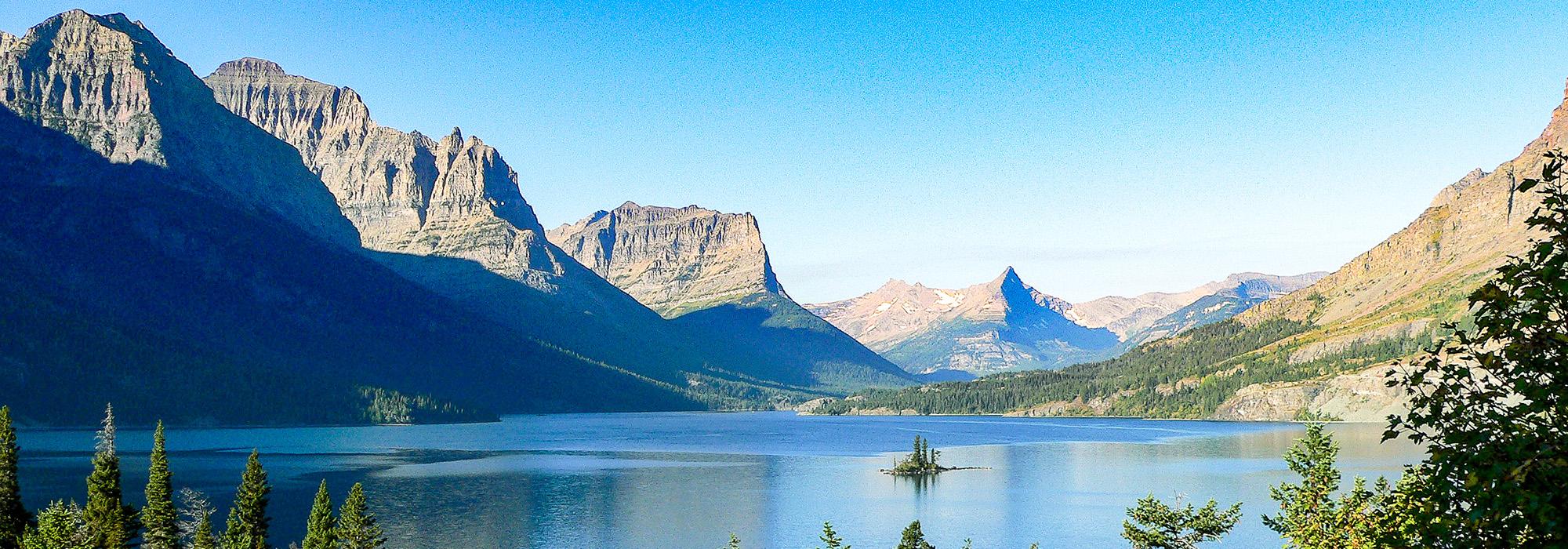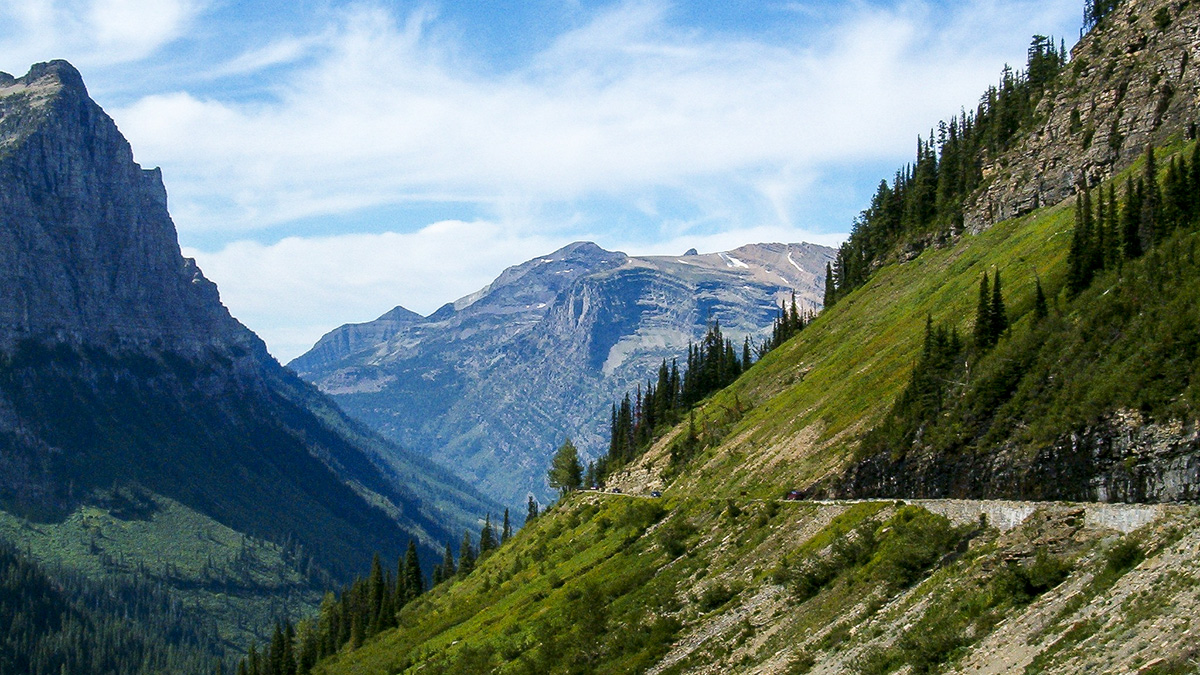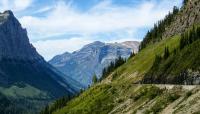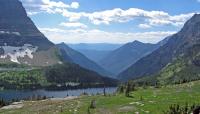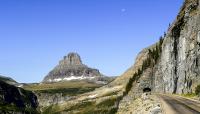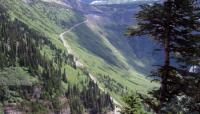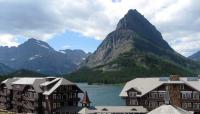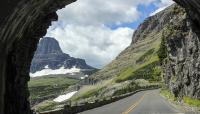Landscape Information
This national park, established in 1910, encompasses over one million acres of prairie, tundra, rugged mountain peaks, glacially-formed valleys, and myriad lakes. The alpine wilderness, stretching from the Great Plains to the Flathead River in northern Montana comprises coniferous forests of Engelmann spruce, Douglas fir, limber pine and western larch. Red cedar and hemlock forests cover the southwest part of the preserve, while deciduous cottonwoods and aspens are found mainly near bodies of water. The valley floors are covered with an assortment of flora, including flowering beargrass, glacier lilies, balsamroot, and Indian paintbrush.
The affluent excursionist George Grinnell first advocated for the protection of the area, which he called the “Crown of the Continent,” in 1885. The Great Northern Railway’s successful crossing of the Continental Divide in 1891 first brought visitors to the southern end of the preserve, and a number of Swiss-style chalets and hotels were built in the 1910s to promote tourism in the region, dubbed “America’s Switzerland.” Under the aegis of the National Park Service and superintendent George Goodwin, park facilities were constructed through the First World War. The 1930s saw the completion of the Going-to-the-Sun Road, a trans-mountain vehicular road that connected the east and west sides of the park, designed by National Park Service Architect Thomas Vint and built by the Civilian Conservation Corps (CCC). Between 1933 and 1942, the CCC constructed campgrounds, trails, reforested slopes, and carved fire breaks. The park was listed as a World Heritage site in 1995.



